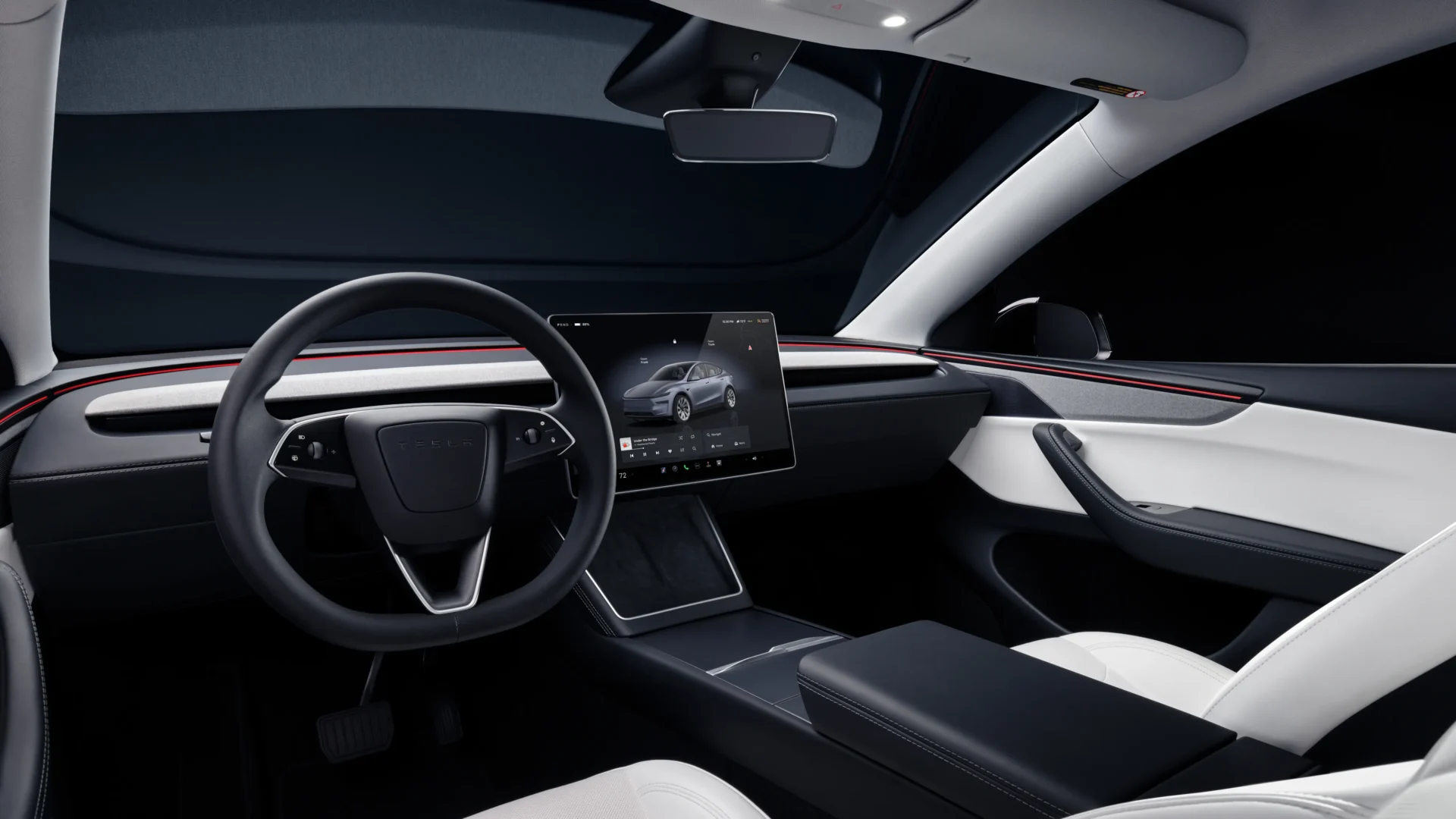Tesla has started delivering a smoother Full Self-Driving experience for owners with the v14 update and the company removed the default brake confirmation step, letting drivers activate self-driving with one touch.
Brake confirm change
Before this update, users needed to press and release the brake pedal to start Full Self-Driving. Now, Tesla has set the “Brake Confirm” setting to be off by default. The feature can still be turned on manually. The release notes explain it clearly, “Brake Confirm for the Start Self-Driving button is now defaulted off. When disabled, Start Self-Driving will not require you to press and release the brake to confirm engagement.”
This improves how quickly drivers can start a supervised self-driving session. Tesla says it reduces friction and makes the handoff between human and automated control simpler.
Tesla introduced this tweak alongside wider updates in FSD v14. The change is part of a bigger push to make the system feel more “robotaxi ready.” CEO Elon Musk had said this version would take lessons from Tesla’s robotaxi project in Austin and build them into cars for customers. The company’s long-term goal is to remove all steps that require human confirmation once it’s approved for full autonomy.
The latest update didn’t stop at the brake confirm feature. There are several visible and background changes that improve driving, parking, and safety.
- Arrival options: Drivers can tell the system where they want the car to stop, Parking Lot, Driveway, Garage, Street, or Curbside.
- Emergency vehicle detection: The car can now detect sirens or flashing lights from ambulances, fire trucks, and police vehicles, and slow down or pull over automatically.
- Vision-based routing: Navigation now runs directly on Tesla’s vision network instead of just GPS and maps. So, the system can react to blocked roads or sudden detours in real time.
- Camera cleaning system: Another highlight comes from FSD v14.1.3. The cars can now clean their front-facing cameras automatically. The feature sprays and wipes the area when the system detects dirt, water stains, or reduced visibility.
- Driving profiles: Tesla refreshed driver speed profiles. There are now four: Chill, Average, Hurry, and Mad Max. The new “Sloth” mode drives extra carefully, while “Mad Max” acts aggressively in traffic, changing lanes more often and speeding up faster.
Hardware and rollout details
The FSD v14 update is now rolling out to vehicles with Hardware 4 (HW4) computers. Newer Teslas like the Model Y “Juniper” and the redesigned Model 3 are getting it first. Those with older Hardware 3 units may get FSD v14 “Lite” later this year, though that version will have limited features.
Tesla promised free upgrades to HW4 for customers who already paid for the FSD package, but many service centers say details are still being finalized.
Owners testing v14 describe smoother acceleration, improved lane changes, and better handling in tight spaces. Many say their cars pull into parking spots and driveways more confidently now. Some early users found fewer sudden stops or “brake stabs” compared to version 13.
Elon Musk said FSD v14.2 will expand safety and “smoothness.” He believes the next subversion, 14.3, could make vehicles feel more intelligent than before. For drivers, the removal of Brake Confirm marks another small but important shift toward fully hands-off driving that feels more natural.
Tesla calls FSD v14 its “biggest step toward true autonomy since v12.” As of late October 2025, the rollout continues across the U.S. and Canada, with Europe and Australia expected to follow later in the year.
You may also like to read:
- Tesla’s FSD v14 acts human in Costco parking lot »
- Tesla builds real-time 3D worlds to train self-driving cars »
- Tesla unveils AI5 chip, 40 times faster than AI4 »




